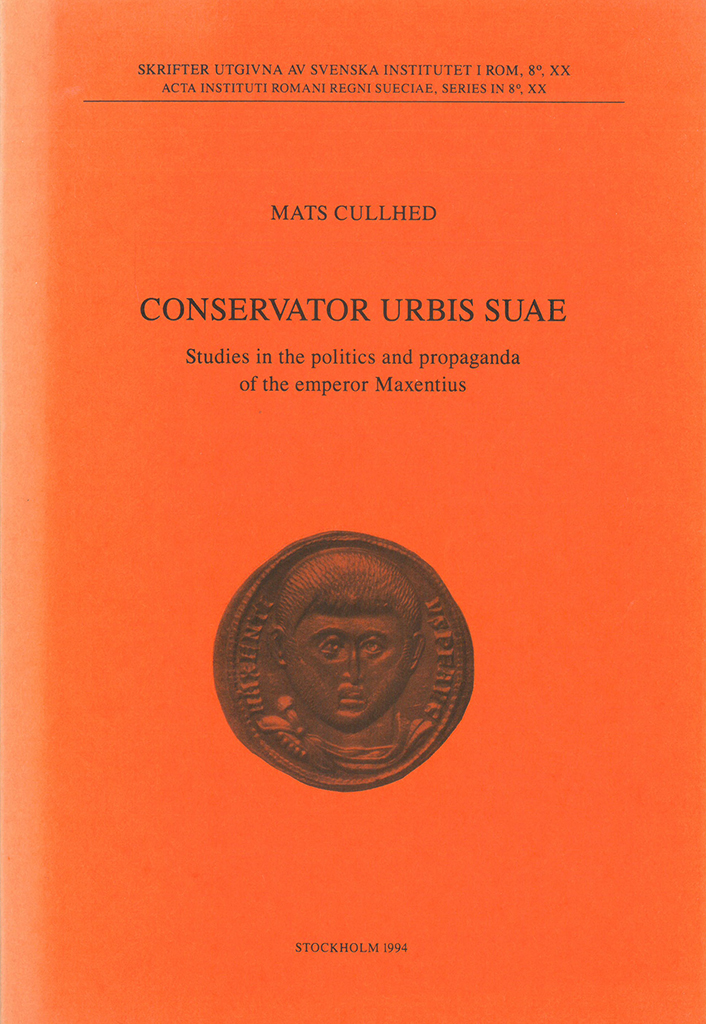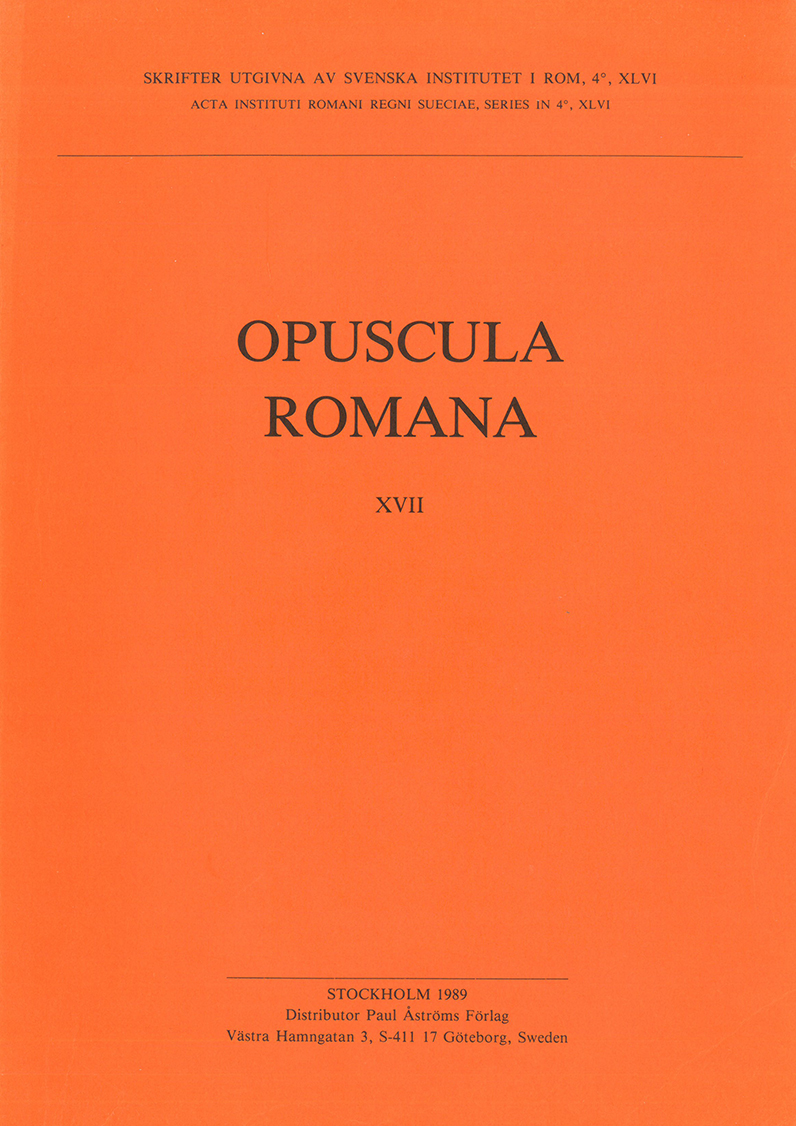Distributed by Astrom Editions Conervator urbis suae. Studies in the politics and propaganda of the emperor Maxentius Mats Cullhed The Roman emperor Maxentius (A.D. 306–312) has usually been seen as a usurper, who sought, but never gained recognition from the other rulers of the Tetrarchy. Maxentius’ reign has been considered a political failure. These studies are an attempt at re-evaluating Maxentius’ politics, as they can be reconstructed from his propaganda, for example, coins and architectural monuments, and from information in the literary sources, above all Lactantius. Interpreting this material within the context of the political realities of the early fourth century and with the aid of modern research on the Principate leads to the conclusion (a) that Maxentius could claim, by means of different criteria, that he was a legitimate ruler, (b) that he never wanted to enter the Tetrarchy, and (c) that he aspired to supreme power for himself. His main weapon of propaganda against his competitors was the city of Rome, where he resided. His position there was a challenge to the Tetrarchy’s decentralized power structure and served to undermine the concord of the tetrarchs. Bibliographical information Mats Cullhed, Conervator urbis suae. Studies in the politics and propaganda…
Distributed by Astrom Editions. Opuscula Romana 17 Contents Johnny Bengtsson, ‘Survey in Italy, “La Farnesina project”’, pp. 7–8 Mats Cullhed, ‘Maxentius as princeps‘, pp. 9–19 Ingrid Edlund-Berry, ‘Four terracotta heads from Poggio Civitate (Murlo). Towards a definition of the ‘Murlo style’’, pp. 21–32 Gloria Ferrari, ‘Felicior Augusto—portrait medallions in glass and the Ravenna relief’, pp. 33–60 Erik Holmberg, ‘Who made the vases of the Red-Line Painter and relations?’, pp. 61–76 Lars Karlsson, ‘Some notes on the fortifications of Greek Sicily’, pp. 77–89 Giordano Labud, ‘Il territorio del sito archeologico di San Simone d’Isola’, pp. 91–95 Kyle M. Phillips, Jr. (†), ‘Notes from Berlin on a bronze owl’, pp. 97–122 Stefania Quilici Gigli, ‘Paesaggi storici dell’agro falisco: i prata di Corchiano’, pp. 123–134 Pontus Reimers, ‘“Opus omnium dictum maximum”. Literary sources for the knowledge of Roman city drainage’, pp. 137–141 Barbro Santillo Frizell, ‘The autonomous development of dry masonry domes in the Mediterranean area. Some considerations’, pp. 143–161 Margareta Strandberg Olofsson, ‘On the reconstruction of the monumental area at Acquarossa’, pp. 163–183 Örjan Wikander, ‘Asonius’ saw-mills—once more’, pp. 185–190 Örjan Wikander, ‘Roman and Medieval tile-roofs. Evidence from representations’, pp. 191–203 Örjan Wikander, ‘Senators and equites III. The case of the Saufeii’,…


